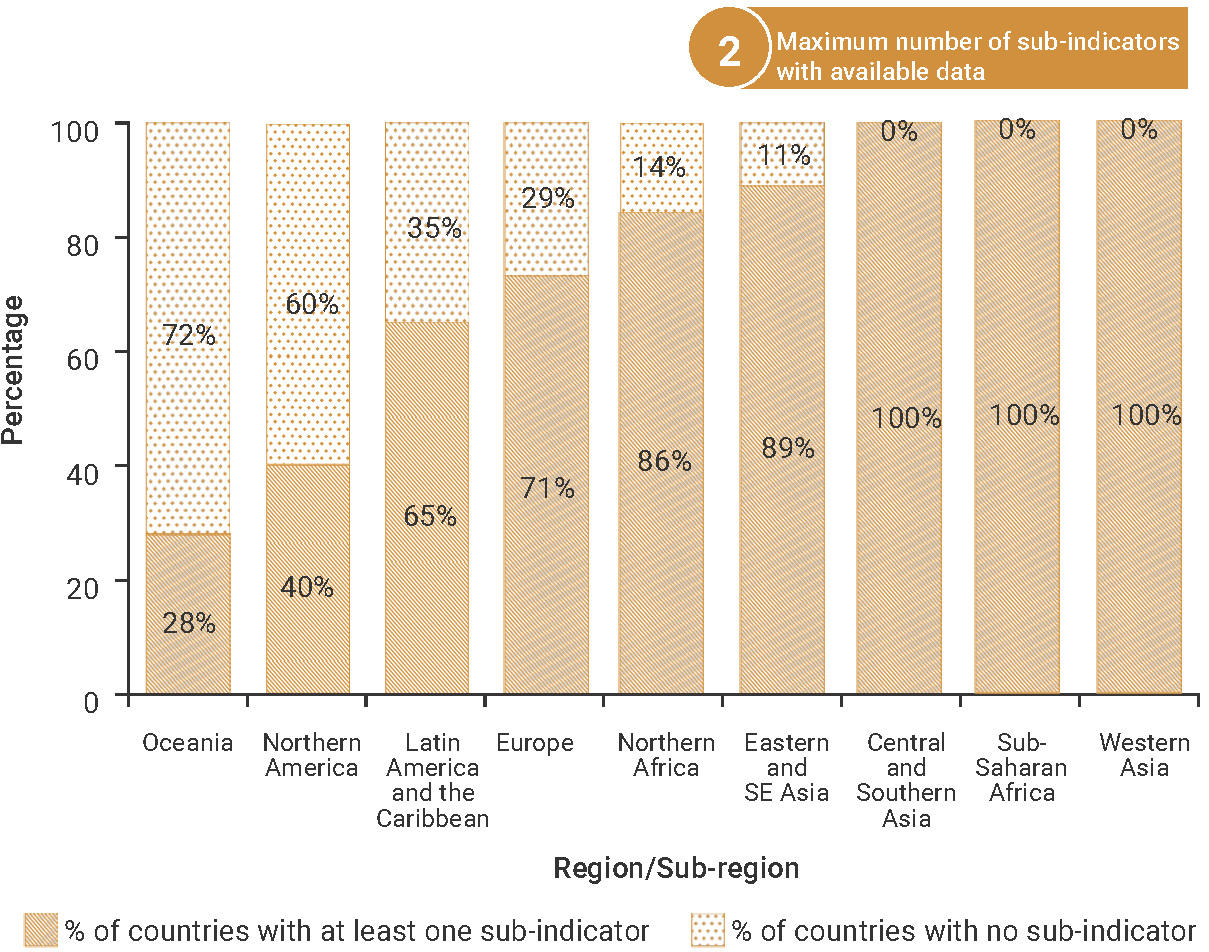SDG Indicator 11.7.1: Average share of the built-up area of cities that is open space for public use for all, by sex, age and persons with disabilities
1. Key features and metadata
Definition: This indicator measures the share of the total surface devoted to open public space and streets as part of the total surface built-up area of urban agglomerations and assesses the access by different population groups to open public space.
| Sub-indicator | Disaggregated by |
|---|---|
|
EN_URB_OPENSP Average share of the built-up area of cities that is open space for public use for all (%) |
Cities |
Sources of information: Information is collated from city land use plans, community mapping activities and volunteered GIS data in addition to initiatives led by national statistical and mapping agencies as well as UN-Habitat and partners.
Related SDG Indicators: 11.3.1 (Ratio of land consumption rate to population growth rate) and 11.2.1 (Proportion of population that has convenient access to public transport).
2. Data availability by region, SDG Global Database, as of 02 July 2025

3. Proposed disaggregation, links to policymaking and its impact
| Proposed disaggregation | Link to policymaking | Impact |
|---|---|---|
|
Average share of the built-up area of cities that is open space for public use for all, by types of public open spaces based on size and coverage area (%)(UN-Habitat 2018d):
Applies to:
|
The size, configuration and functionalities of open public spaces may vary within and across cities and beyond their general qualification as ‘public open spaces’. It is important for better understanding their role and attributes in the urban ecosystem and broader scale (UN-Habitat 2018d). This disaggregation enables a characterization of public open spaces by cities. It also provides useful information to decision-makers so they have better knowledge of their functionalities and actual uses by city dwellers, or other categories of users depending on their "catchment" area or attractivity, with a view to taking informed decisions that make them better suited to the real uses and needs of residents. This disaggregation is consistent with the New Urban Agenda - Article 67 (UN 2016b). |
To contribute effectively to the urban metabolism, social inclusiveness, economic productivity,and wellbeing of city dwellers, it is essential that urban areas are equipped with a variety of public areas that are accessible to all and with sufficient dedicated space. Depending on their size, specific features and facilities, green and public spaces can accommodate a number of diversified activities and services to the population. These include recreation, sport, urban nature and ecosystem conservation, social interaction, amenities, and may attract visitors from outside (UN-Habitat 2018d). They are a considerable asset for city residents – contributing to the socio-cultural, economic and political regulation ofthe urban system – and as such are a vital component of a city’s broad ecosystem that needs to be expanded based on expressed needs. |
|
Average share of the built-up area of cities that is open space for public use and accessible for persons with disabilities (%)(UN-Habitat 2022) Applies to:
|
As underlined by the New Urban Agenda (UN 2016b), public spaces are a key element for the social cohesion, inclusion and resilience of city residents. They are notably central in enhancing social equity, particularly for disabled people. By observing the accessibility of green and public spaces to disabled, this disaggregation offers relevant information for monitoring the development, adoption and implementation of policies and interventions in favour of this segment of the population. The information collected can also lead to measures tailored to the specific needs of the disabled population, such as accessible pathways, audio signals, elevators, braille signage, seating areas, play facilities, and website services to accommodate their needs and promote equal access and enjoyment of public spaces (UN 2023e). |
The lack of easy access by city residents to open public space applies to disabled people who suffer more due to lack of suitable infrastructure and services (UN 2023e). This means limited physical activity or social interactions and public space amenities, which is likely to exacerbate existing inequalities within cities. Also, understanding the dynamics of people accessing open public spaces provides a relief to different categories of societies, allows better engagement among community members or strengthens social interactions based on sex or age. Local public authorities, in partnership with other city stakeholders, need to develop inclusive designs for public spaces that are people-centered, equitable, accessible, and affordable for disabled population to ensure they can enjoy their benefits in terms of physical and mental health, quality of life and well-being. |
|
Average share of the built-up area of cities that is open space for public use, by sex (%)(UN-Habitat 2022):
Applies to:
|
This disaggregation helps identify the impact of national and local policies and investments on the suitability and inclusivity of access to open spaces for various categories of the population based on their sex and/or age. This would help identify groups that are left behind and develop targeted policies to address such gaps or identify the categories that benefit the most from these spaces and plan accordingly. This disaggregation is consistent with the New Urban Agenda (UN 2016b). |
|
|
Average share of the built-up area of cities that is open space for public use, by age group (%)(UN-Habitat 2022) Applies to:
|

